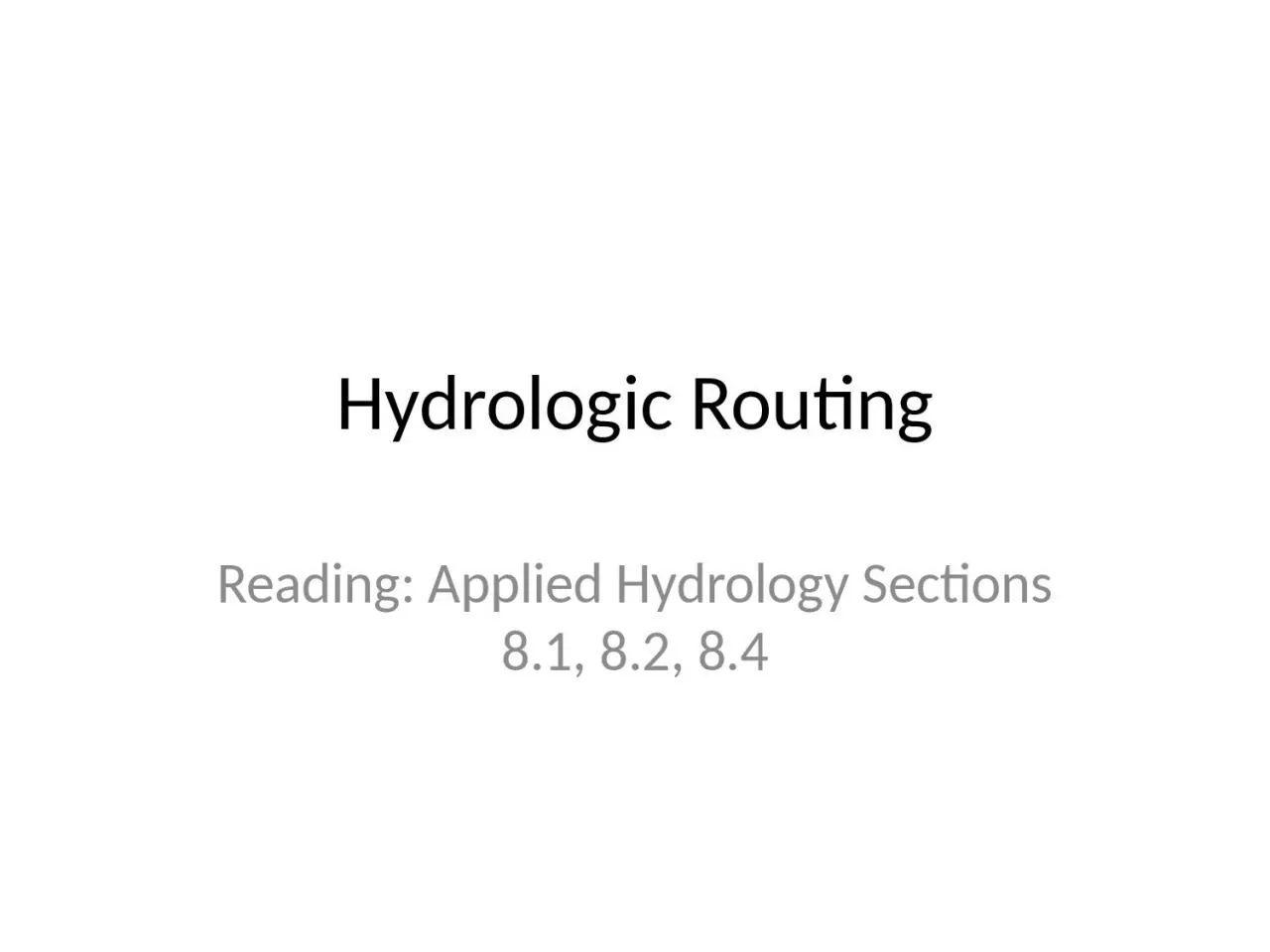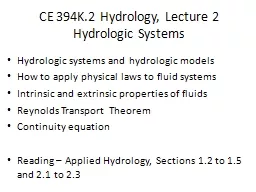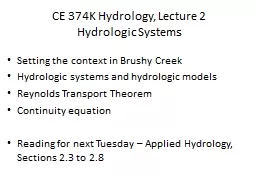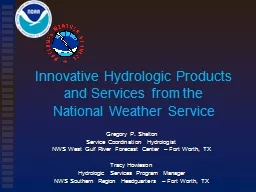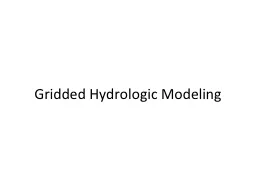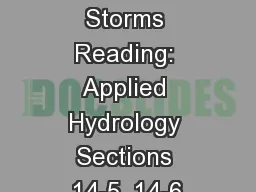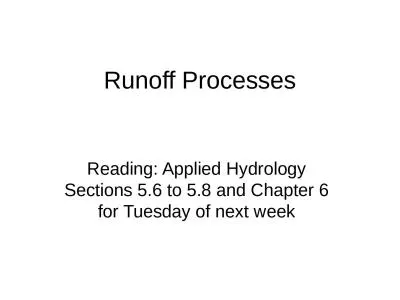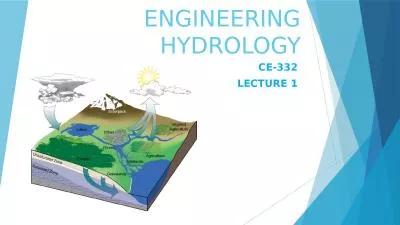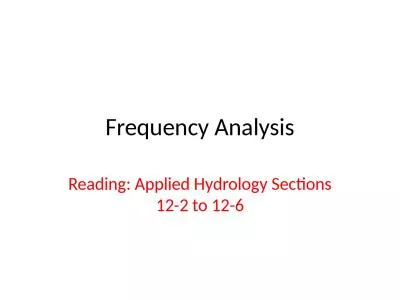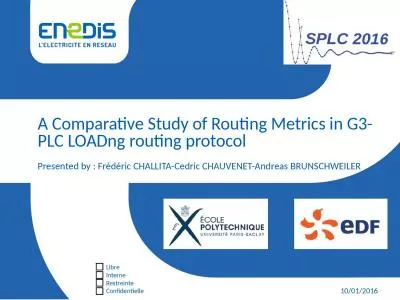PPT-Hydrologic Routing Reading: Applied Hydrology Sections 8.1, 8.2, 8.4
Author : jade | Published Date : 2023-10-04
2 Flow Routing Procedure to determine the flow hydrograph at a point on a watershed from a known hydrograph upstream As the hydrograph travels it attenuates gets
Presentation Embed Code
Download Presentation
Download Presentation The PPT/PDF document "Hydrologic Routing Reading: Applied Hydr..." is the property of its rightful owner. Permission is granted to download and print the materials on this website for personal, non-commercial use only, and to display it on your personal computer provided you do not modify the materials and that you retain all copyright notices contained in the materials. By downloading content from our website, you accept the terms of this agreement.
Hydrologic Routing Reading: Applied Hydrology Sections 8.1, 8.2, 8.4: Transcript
Download Rules Of Document
"Hydrologic Routing Reading: Applied Hydrology Sections 8.1, 8.2, 8.4"The content belongs to its owner. You may download and print it for personal use, without modification, and keep all copyright notices. By downloading, you agree to these terms.
Related Documents

